Why small vintage espresso machine brands are so special
Table of Contents
Ultra Rare Machines
The allure of small brands is their vanishingly few machines that survived decades among the maybe hundreds or low thousand produced total from each company, hiding in storage, used as a display piece, or simply forgotten. The survivors are sought after by collectors who have many of the more common machines, and or are seeking to have something unique, something very few or any other collectors have. Every detail and facet of each machine is something only possessed by those lucky enough to acquire one.
Sometimes, specific models will have only been found in the single digits; even more rarely, less than five. These ultra rare machines will commend very high prices for the chance to have something unique, essentially bespoke. This is the primary driving force for seeking out these small brands.
However, pricing can also vary if the brand is not as well known. Ultra rare machines from Faema or La Marzocco have a name brand trait that may result in more collectors attempting purchase rather than a one-off machine from a small brand, yet the most devoted collectors will know the significance of the smaller brands, and understand their rarity.
The Small Brands
When I first began to collect vintage espresso machines, I only knew about just a few brands like Gaggia, Faema, La Pavoni, and La Cimbali, titans of the espresso machine industry. They were not alone. Just like the automobile or aerospace industries, there were many smaller brands that attempted to make a name for themselves that no longer exist today.
Eterna, Snider, La Dorio, American Express, Universal, Tortorelli, San Giorgio, etc. These brands leave behind only their few surviving machines and old photos of them, and often little written information exists besides that. Their known legacy is unfortunately minimal due to the fading of memory and passing of former employees and workers, even if they existed for decades during the 1900’s.
Some of the brands mentioned above first were founded during the column espresso machine zenith prior to Gaggia’s release of the spring lever machine in the 1940’s. These brands have more history and documentation that can be found. However, some brands were founded after the 1940’s that then went defunct after just over a decade due to competition in the espresso machine market. One is a brand called La Cosmo.

La Cosmo
La Cosmo was based in Milan, as many other brands of the era were located. The founder of espresso machine company Dalla Corte, Bruno Dalla Corte, was said to have worked with La Cosmo for a few years according to his son Paolo.
The lone brochure from the Milan Expo provides the basic company information: the founders named Cosmo Angelo and Vallacchi Aurelio, the address of their workshop at 52 Via Washington (which still exists today), contact information, and brief description of their products that focus on espresso machines, coffee grinders, and strangely enough hydraulic elevators.
What this snippet does not describe is the design and style of La Cosmo’s espresso machines. The known machines that survive, of which there are maybe 20 known worldwide after asking many contacts, are extremely well built, and are in my opinion some of the most beautiful machines ever designed.
The majority of surviving machines are two group spring lever machines, but there are three that have hydraulic groups, of which one is a single group and two are two group machines.

One in the World
I have a machine that I believe constitutes an ultra rare machine. Prior to asking other collectors about it, there weere hints that the machine was unique and assisted in determining its rarity:
- There is no model name, or it is unknown
- Pictures of the machine cannot be found online, even within social media sites or specific forums
- Collectors, who often know about the smaller brands, universally say they have never seen this machine before, or only heard about it in the past
- Those same collectors, some of them with hundreds of machines in their collection, offer to purchase the machine when shown pictures
What I possess is a single group La Cosmo hydraulic espresso machine. Before I originally purchased this machine, I only knew of three models of machines produced by the company, two of which are in the Cagliari collection in Modena, Italy and also are one in the world. All other machines owned by collectors have a specific body panel design that is similar to the Faema Urania in shape with an acid etched panel design and gold trim. A plexi top is also used for the cup tray.
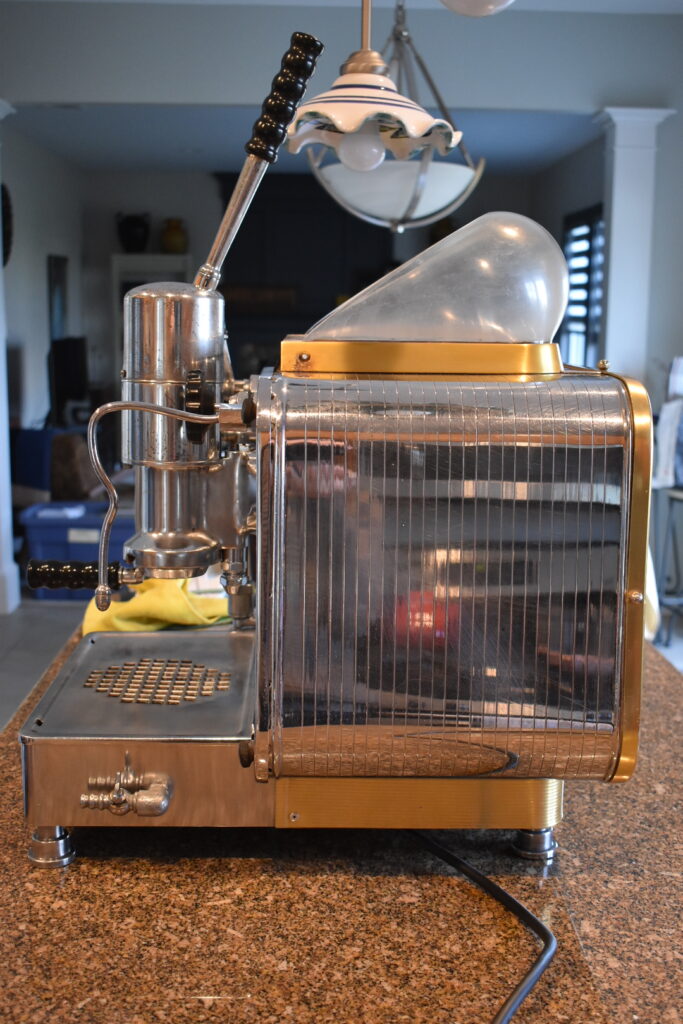




Besides one possible other example that I have not yet seen physical proof provided, the single group hydraulic machine is one of a kind worldwide. The body panels are completely unique compared to other models produced by La Cosmo. Instead of a large glass piece, the rear panel is focused on a smaller, decorative glass piece that contains a functioning blue fluorescent light. The cup tray has a metal railing instead of a plexi top.
There are elements on one of the machines in the Cagliari collection that has a similar top railing and decorative rear piece depicting what appears to be a man holding a coffee bean or acorn with “Crema Caffe Naturale” written on the glass. A cursive “La Cosmo” emblem made of brass is on also on both machines.


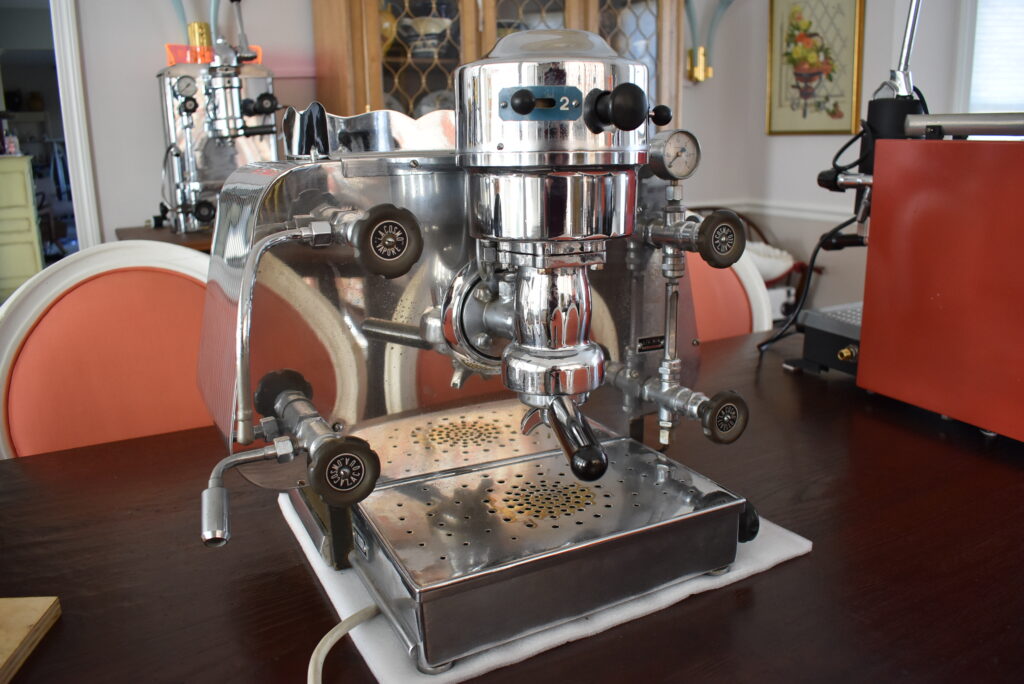

What is remarkable about this machine is the attention to detail on every part of the machine. The knobs all have a round plate with their description (aqua, vapore, livello, etc) for each valve. The group itself has 77 stamped on specific parts, possibly indicating it is the 77th group made. All metal panels and the frame are very thick gauges of metal, and the machine itself is very heavy for its size.

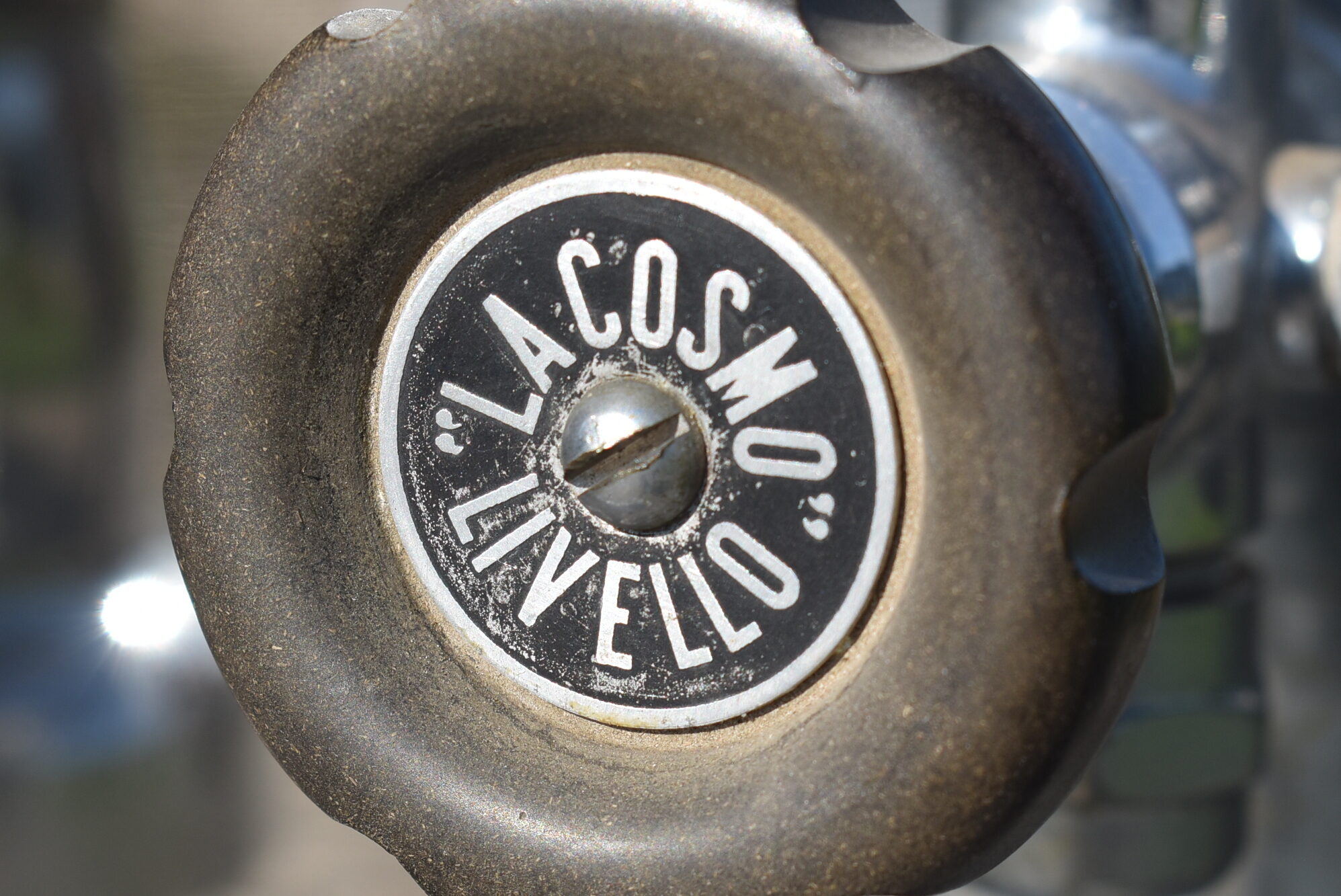
Stamped on an ID tag on the lower frame and also on the boiler are the ANCC number and Machine number. The ANCC was a tax that was placed on pressurized boilers in each region in Italy, tracked by a universal number system that all espresso machine brands adhered to if the machine was produced for the Italian market.
The machine number refers to the total machines produced at the time. The single group La Cosmo machine is number 376, a preciously low number. A date is stamped on the boiler, from 20 June 1956. La Cosmo did not exist after 1960, so with the number of machines produced up until 1956, it can be surmised that total machine production did not exceed 1000.
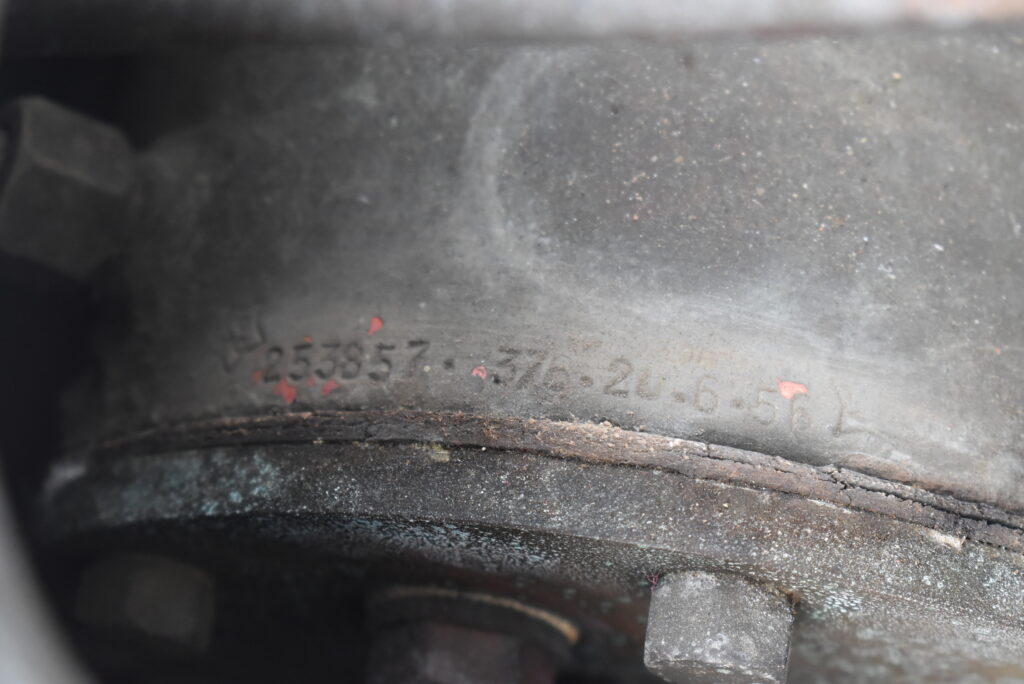
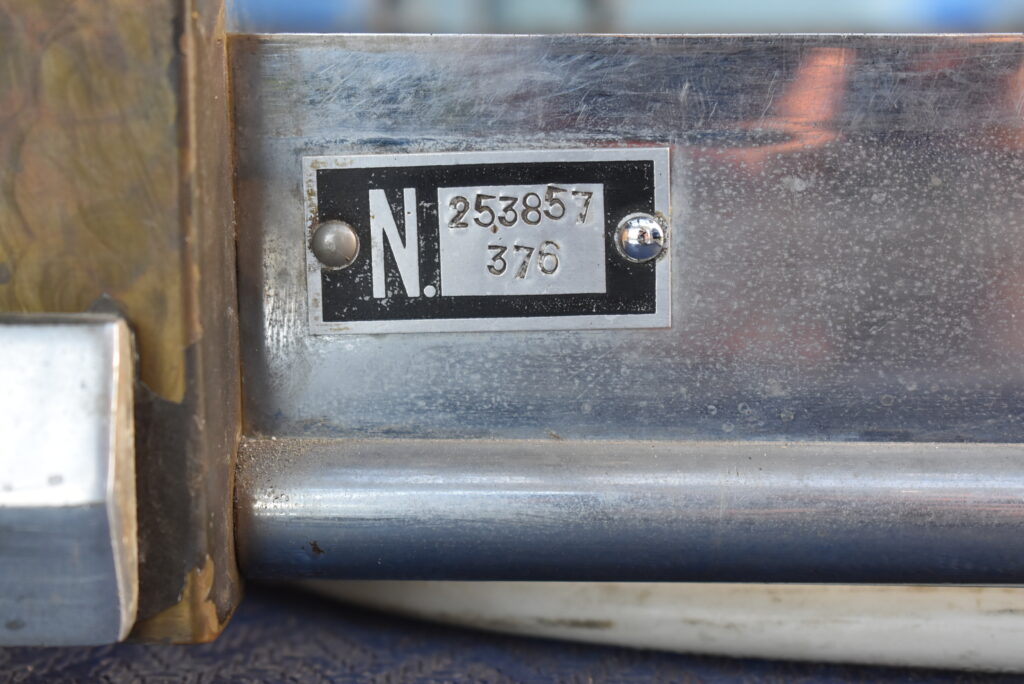
I purchased the machine local to me, about three hours away by car from an older gentleman with a small collection of machines he brought over from Italy in the late 1990’s. Along with the five other machines and three grinders I purchased from, he originally bought them from a coffee roaster near Verona that was expanding their coffee tasting room where these vintage espresso machines once were. I was the only collector that lived nearby and could take them home in my car over two trips.
It still remains as my most expensive purchase in my seven years of collecting espresso machines, but I have no regrets in my decision. The other machines are also very interesting, and I have worked on one of them already.

The Future
Normally, part of my passion for collecting vintage espresso machines includes restoring them to a functional state to better understand how they work, and to appreciate the fact they have a purpose beyond just a static display piece in a museum. The La Cosmo machine I own is a project I will only undertake when I believe I can restore functionality without taking away its past history.
Specifically, the hydraulic group is a design made and produced by La Cosmo. Besides my machine, the other two hydraulic espresso machines known to exist are not in a running state, nor is there information or instructions of operating and maintaining the group. I would be going into this project with no reference material, and I will need to document everything I find and make all the seals myself.





I will thus not restore the machine at this time. I was able to work on a more common hydraulic machine, a 1st series La Cimbali Gran Luce Automatica, but I had a little more assistance with existing literature about the machine and Cimbali’s hydraulic machines. For now the machine will remain on display as one of the most beautiful machines I have ever seen and own, and one of the rarest in existence. Hopefully, I will decide to commence with this restoration soon.
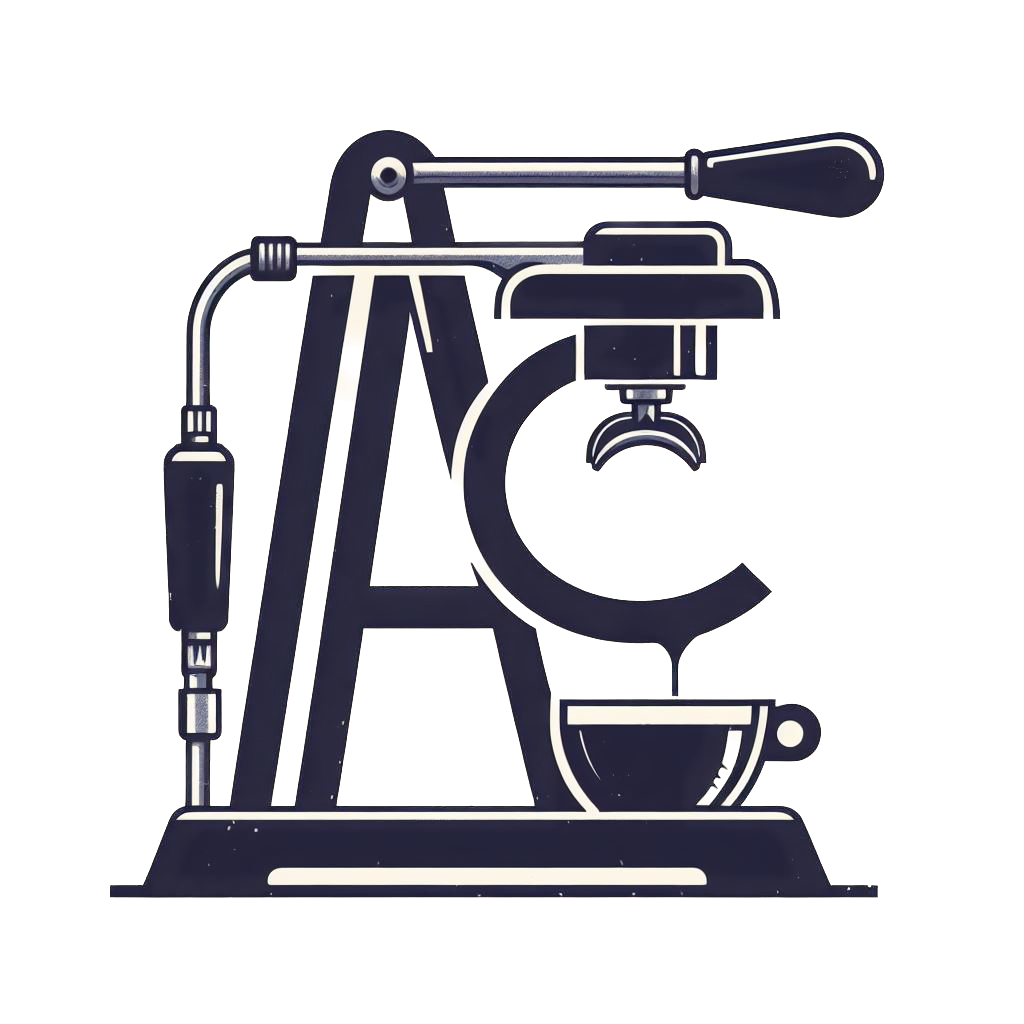

Leave a Reply